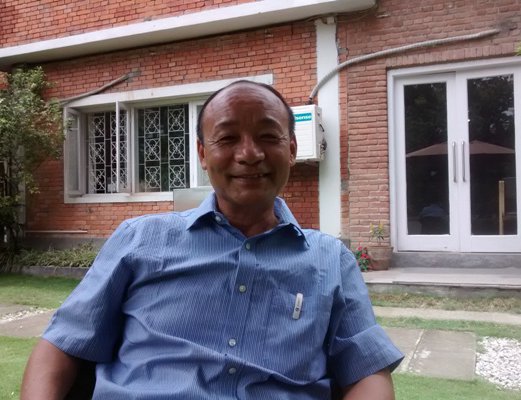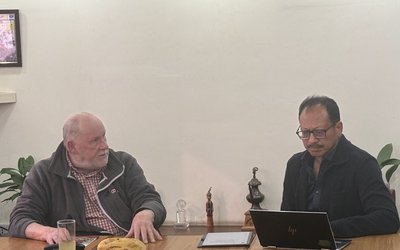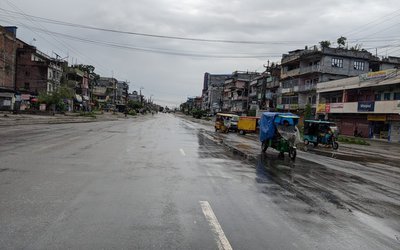
What are the implications of the historical Paris deal for Nepal?
As far as the recent decision is concerned, the climate strategy for beyond 2020 will be prepared between 2016 and 2020. The deal says nothing about the coming years. However, a strategy will be formulated beyond 2020 in the coming five years. There will be country specific commitments on carbon reduction, mitigation and adaptation. After accumulating all commitments, the strategy will be finalized.
Do you see any opportunity?
There is a lot of opportunity for us as Nepal has already implemented a number of trials and pilot programs and projects. Among many programs, our LAPA was hailed in recently concluded Paris conference. Many LDCs prepared NAPA which is at the national level only. But, Nepal has developed a LAPA and implemented it at local level as the pilot program. Implemented by Ministry of Environment and Population, Nepal Climate Change Support Program has been successful to generate awareness at local level on implication of climate change in the mid-west and far-western districts.
What do you suggest for adaptation?
Even the COP 21 had recognized LAPA. Nepal has done a very successful program. In this context, Nepal needs to compile its learning and publish it. Our thrust should be to integrate that learning into the 2020 strategy. We should work to reflect our successful piloting program in the strategy. If we can make it, Nepal will be a lead nation in the local level adaptation program. This will also make it easy for us in technical, financial and technology sectors.
How do you look at INDC?
So far as internally nationally determined commitments are concerned, we have to make them. INDC will be a showcase for what Nepal can do in mitigation since we are going for a low carbon economy. In adaptation, we can make commitments reflecting our experiences and piloting. We need to make commitments after 2020.
As Practical Action has a long experience of implementing the programs in different levels, how do you see the possibility of replicating the learning you have achieved in this context?
Different countries will make efforts to influence 2020 strategy with their own learning. Various countries will promote their own experience and implementation in the 2020 adaptation strategy. Nepal also needs to promote its own successful model, LAPA. As LAPA is a community based adaptation, it is a plan directed to the community at the lower level. This plan is implemented at the community level. Practical Action’s experiences are that adaptation program is ultimately for the community level and lower level. Thus, if we promote community based adaptation and we make efforts to push for more community based adaptation in the 2020 strategy, it will be useful for us.
Where do we use the experiences of Practical Action?
Practical Action’s experience is that there is the need to implement community based adaptation at the community level with integrated approach as community needs to work in different sectors including drinking water, irrigation, education, agriculture, and infrastructure. There is the need to integrate all these activities required by the community looking at the changing climate. Our experiences have also shown that there is the need to promote the community based approach.
As the government has a very successful model of NCCSP and the international organizations like Practical Action also have different approaches, what do we actually need to do?
Ultimately, the government needs to be in the driving position. The role of civil society originations is to support the program driven by the government. In the meantime, we also need to give feedback as various civil society organizations have been implementing the programs. Civil society organization like ours will provide technical support. We can provide support to document the learning of the NCCSP or make it presentable. We can advocate the program at various forums pursuing to accommodate it in the strategy. Once the government announces its path for future strategy, the civil society organizations and international organizations also advocate this in various forums to push the efforts.
As Practical Action is in the NAP Process, how can your organization support the government?
There are two kinds of adaptation: one is planned and the other is autonomous. Autonomous adaptation is guided by natural system as the nature develops its own adaptation system for changing climate. However, as a human being we need to follow autonomous as well as planned adoption anticipating the future scenario. NAP is a process in which adaptation will be developed, participated, and planned adaptation strategy for future. By developing the strategy anticipating the scenario, we need to take two things side by side one is climate scenario after 2020. We need to build the scenario for 2025 or 2030.
How do you see NAP?
As NAP is a long term adaptation plan, we need to build the scenario and formulate the strategy on it. Thus, we need to build different climate scenario. After building the scenario, we need to analyze what the state of agriculture will be even if the temperature goes up by 0.05 Celsius or what the likely impact will be in the water resources. There is the need to build the impact scenario also. When we build the climate scenario and impact scenario, only after that we can develop the strategy to address it.
How is Practical Action supporting NAP?
Practical Action is planning to support to the government to prepare the NAP within two years. This NAP will build the climate scenario for various sectors and suggest plan for intervention. That is planned intervention. NAP will technically bring this. There is the need of technology, capacity and resources. After presenting the road map through NAP, it will project all. This will be a rolling plan for the country.
- MELAMCHI WATER SUPPLY: No Interruption During Monsoon
- Jun 25, 2025
- KOREAN RETURNEES: Successful Integration
- Jun 25, 2025
- UPPER TRISHULI-1: Engaging With Local
- Jun 25, 2025
- IME GROUP: Twenty Five Years Of Journey
- Jun 24, 2025
- NEPAL’S AIR POLLUTION: A Growing Health Concern
- Jun 24, 2025















